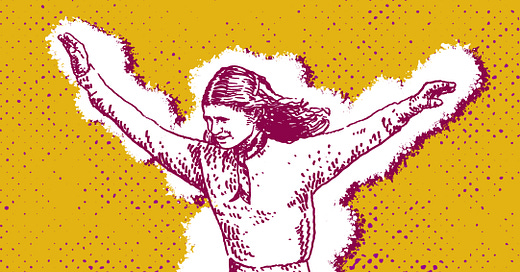Before Law & Order, Law & Order Criminal Intent, Law & Order Special Victims Unit, Law & Order Trial By Jury, Law & Order LA, Law & Order UK, or Law & Order True Crime, there was Skateboard: The Movie starring Leif Garrett.
Yep, the career of Dick Wolf, one of TV’s most prolific and iconic producers began with a terrible, zany comedy about the craze that was then sweeping the nation. Skateboard: The Movie was not a procedural drama. But it did feature one scene where an earnest skate team promoter says the words “I ain’t telling no kid to take a dive, Sully.”
It also features a cast made up of largely young pro skateboarders at a time when skateboarding was still a niche activity -- especially beyond California. The most famous skater in the movie was probably Tony Alva. But more importantly, playing Jenny Bradshaw was a young skater named Ellen O’Neal.

As a teenager in the 1970s, O’Neal was one of the biggest stars in skateboarding. She looked the part, with long blonde hair, and she embodied a sort of passionate but chill attitude about skating that straddled the same fault lines that came to define the sport as it grew up into an international, and commercial phenomenon. (Skateboard: the Movie was just the beginning.)
O’Neal grew up in San Diego. She danced ballet, and did gymnastics. She body surfed. And she got into skateboarding-- she competed all over the west coast at a time when there simply weren’t that many girls doing it. She was good too -- good enough to frequently beat the teenage boys she was competing against.
“Everything I do at freestyle contests I learned from the unidentified hot-kids in my neighborhood,” she told a magazine called The National Skateboard Review in 1976. “These are kids that could dust some of the kids that show up at meets all the time, but they just want to keep their riding fun.”
The dudes at meets, O’Neal said, were too focused on “blood, money, and prizes.”

O’Neal’s freestyle routines were a lot different from what you might see now: skating was still a raw, and undeveloped sport. The boards themselves had yet to evolve into what they are today: they were smaller, slower, stiffer. Ellen did things like handstands. She spun around on two boards at once: she resembled a figure skater, or an acrobat performing on a flat surface.
She managed to pick up sponsorships without giving up her love of skating. She still hung out with the neighborhood hot-kids . She was sponsored by Vans, Gordon & Smith, and Bennett Trucks. She got to start in Skateboard: The Movie, and in an episode of Wonder Woman that ends with Wonder Woman herself skating downhill to take out a couple of bad guys. O’Neal was also featured in a documentary called Skateboard Kings that tracked a lot of the original Dogtown crew. In the movie, she’s introduced as “The Hobie Queen.” Unlike the other movies, in this one she’s actually just being herself. You can get a sense of her vibes at around the 39-minute mark:
In 1977, O’Neal was featured in an LA Times story. The article was basically typical of the sexist attitude that skateboarding (and, to be fair, just about every other sport on earth) took toward women competitors at the time.
Most of the professionals, and even the good amateurs, are men. A lot of the girls are fans, or “scooties.”
“We came to see if there were any cute guys,” said blonde, tanned, and blue-eyed Christi Oster,” 17, of Arcadia.
But the story also quotes O’Neal, who was just 18 at the time, but as wise as anybody could hope to be.
“It’s more important for me to do my best than to be the best.”
Related Reading
It’s not crucial, or directly related, but you should watch this scene from O’Neal’s Wonder Woman episode, “The Skateboard Whiz.”
There is unfortunately not too much out there on O’Neal. Brief mentions here and there. The previously linked profile in The National Skateboard Review is probably the most thorough glimpse into her life, and the moment of her stardom. (The magazine itself was a sort of trade publication put out by a group called “Skatepark Constructors” in Carlsbad, just north of San Diego. It also gives a little insight into how DIY and small the skateboarding world was at the time. The sport hadn’t become corporate yet or found a national voice. Thrasher was still five years away from publishing its first issue.
Also: if anybody has actually *watched* all of Skateboard: the Movie, I would love to hear about it.
Book Update
STEALING HOME is less than three weeks away from publication. If you are a Sports Stories subscriber, you will almost certainly enjoy it. Just think of it as a 300-page issue of the newsletter, illustrations included.
Pre-order now, and we’ll still send out a signed card with Adam’s beautiful drawings.
This has been Vol. 20 of Sports Stories by Eric Nusbaum (words) and Adam Villacin (art). If you have any questions, comments, or concerns, please reply to this email or contact enusbaum@gmail.com. We’d love to hear from you.
Sports Stories is 100 percent free. If you enjoyed this week’s newsletter, and want to show your appreciation, the best way to do that would be to sign up, share it on social media, or forward it to someone you think might enjoy it too.



I saw Skateboard when I was about 10 years old. It was great to me at the time.